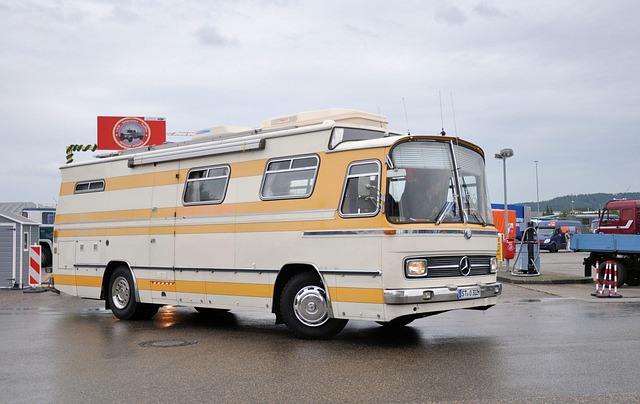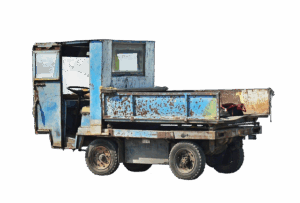Registering Your Car in California: Step-by-Step Guide to DMV VIN Verification
Registering a car in California is a straightforward process, but understanding the requirements and gathering the right documents is crucial. This comprehensive guide walks you through the steps, fro…….

Registering a car in California is a straightforward process, but understanding the requirements and gathering the right documents is crucial. This comprehensive guide walks you through the steps, from meeting essential criteria like insuring your vehicle to obtaining crucial documents for a successful DMV VIN verification. Learn how to conduct a vehicle history report, schedule and complete the verification process, and finalize registration with additional necessary steps.
- Understand the Requirements for Car Registration in California
- Gather Necessary Documents for VIN Verification
- Perform a Vehicle History Report and Check for any Issues
- Schedule and Complete the DMV Vin Verification Process
- Finalize Your Car Registration with Additional Steps
Understand the Requirements for Car Registration in California

Before diving into the registration process, it’s crucial to understand the requirements for car registration in California. The California Department of Motor Vehicles (DMV) mandates several key steps, including a thorough vehicle inspection and verification of your vehicle’s unique identification number, known as the Vehicle Identification Number (VIN). This VIN verification is a critical part of ensuring that your vehicle meets safety and environmental standards.
One efficient way to complete this requirement is through a mobile vin verifier or mobile vin inspection service, which streamlines the process by allowing you to verify your VIN without visiting a DMV office. These services offer convenience and speed, making it easier for California residents to meet the registration demands of their state.
Gather Necessary Documents for VIN Verification

Before you begin the registration process, it’s crucial to gather all the necessary documents for DMV VIN verification. This includes your vehicle’s Registration Application (Form DMV 801), which can be obtained from the California DMV website or any local field office. Additionally, you’ll need the Vehicle Identification Number (VIN) from your car, typically found on a plate attached to the dashboard or door frame. Make sure it is legible and accurate.
For a seamless mobile vin verification process, ensure you have your vehicle’s title in hand, along with valid identification like a driver’s license or state-issued ID card. Some services also offer vin inspection through mobile vin verifier apps, which can simplify the process further by providing instant results and guidance throughout.
Perform a Vehicle History Report and Check for any Issues

Before registering your car in California, it’s crucial to perform a Vehicle History Report (VHR) using the vehicle identification number (VIN). This step is essential as it allows you to uncover any potential issues or accidents that might affect your vehicle’s eligibility for registration. You can obtain a VHR through various online platforms or visit a local DMV office. The report will provide valuable insights into the car’s past, including ownership history, collision damage, and outstanding loans.
A mobile vin inspection or using a mobile vin verifier can be a convenient option to ensure your vehicle’s history is clean. This process involves a professional technician accessing the VIN data using advanced tools, providing you with a detailed report instantly. By checking for any issues early on, you can avoid unexpected roadblocks during the registration process and save time in the long run.
Schedule and Complete the DMV Vin Verification Process

After gathering your required documents, the next step in registering your car in California is to schedule and complete the DMV VIN verification process. This crucial step involves ensuring that your vehicle’s identifying number (VIN) matches the information on record with the Department of Motor Vehicles (DMV). You can conveniently schedule this inspection through the DMV’s online services or by visiting a local field office.
During the verification process, you’ll need to present your vehicle for an inspection using a mobile VIN verifier or have it inspected at a designated location. The DMV will cross-reference the provided VIN with their records to ensure accuracy. It’s essential to cooperate fully during this stage as any discrepancies found may delay the registration process. A valid and accurate VIN is vital in maintaining California’s vehicle record integrity, so make sure everything aligns before proceeding with registration.
Finalize Your Car Registration with Additional Steps

After submitting your application and required documents at a California DMV office or through their online platform, there are additional steps to ensure your car registration is finalized correctly. One crucial step involves performing a DMV VIN verification, which cross-references your vehicle’s unique identification number (VIN) with their records to confirm its authenticity and ensure it complies with all regulations. This process helps protect against fraud and ensures the accuracy of registration details.
For added convenience, many residents opt for a mobile VIN inspection or utilize a vin verifier app. These services allow you to check your car’s history and validity from the comfort of your home or on-the-go. By combining these digital tools with proper DMV procedures, you can streamline the car registration process in California, ensuring a smooth experience throughout.
Registering a car in California involves understanding key requirements, gathering essential documents, verifying your vehicle’s history, and completing the DMV VIN verification process. By diligently navigating these steps, you’ll be well on your way to securing a valid registration for your new or used vehicle. Remember, accurate and up-to-date information is crucial during each phase, ensuring a smooth and efficient registration experience.







